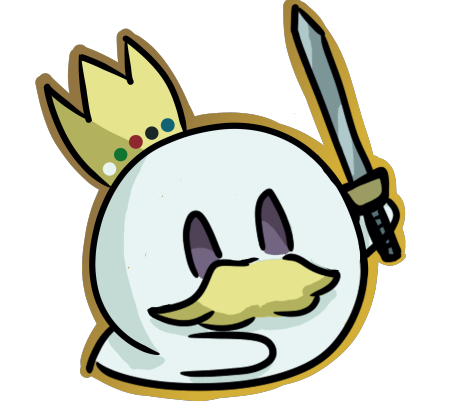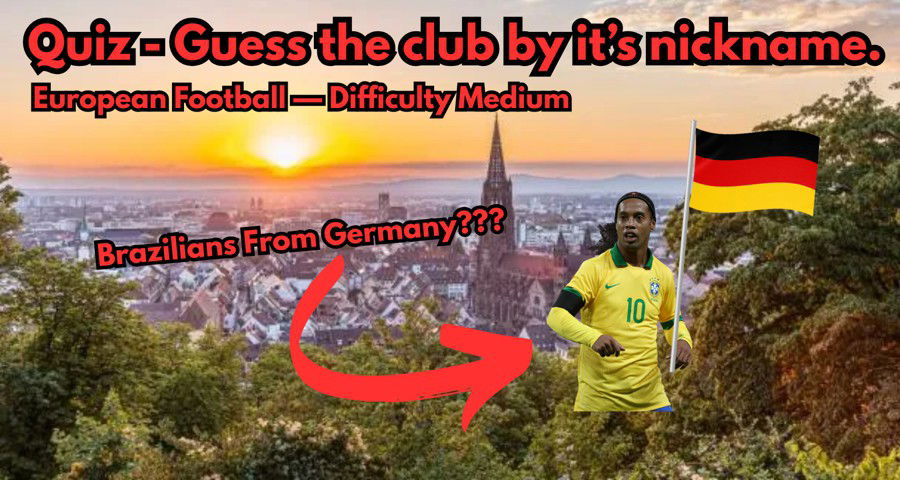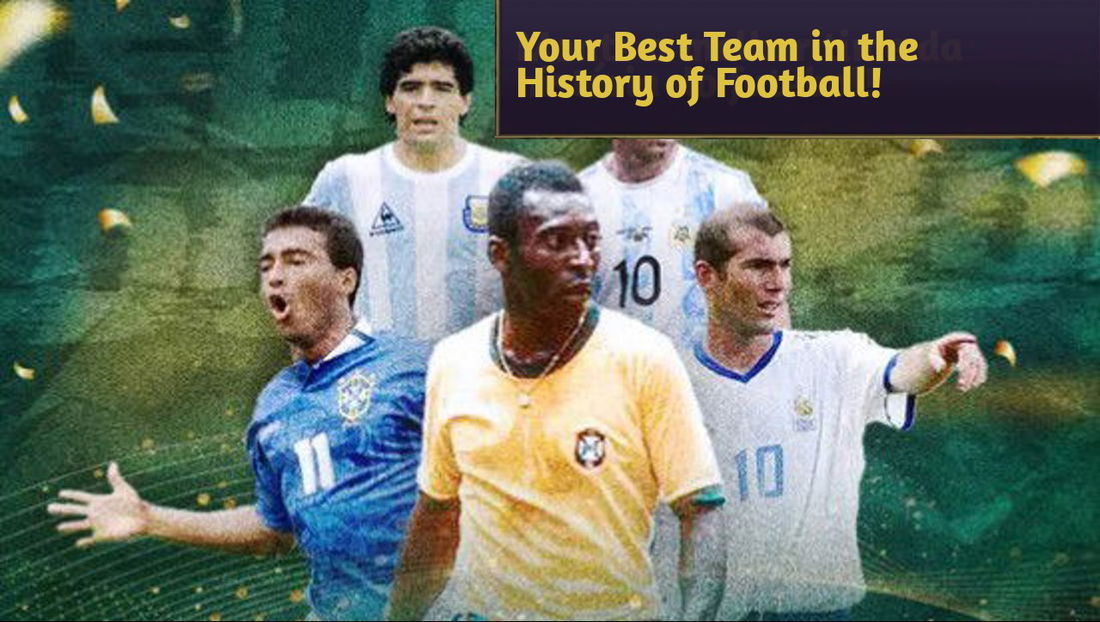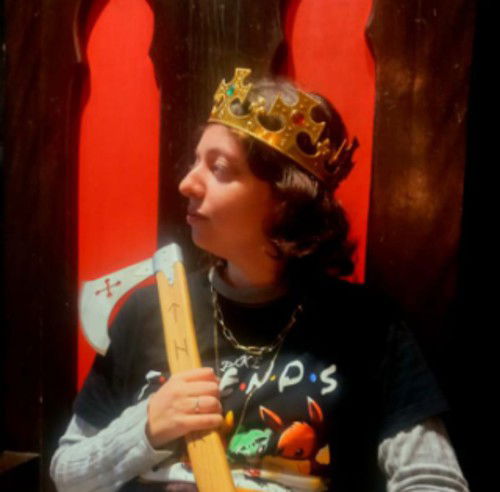Football: Beyond Just a Sport
Football is more than just a sport; it is a collective dynamic that requires discipline, communication, and harmony among players. Each athlete plays a fundamental role, and the strength of the team emerges from the fusion of individual talents into a well-structured system.
The efficient application of tactical concepts and clear on-field communication can be the difference between an organized team and a disorganized one. Let's explore this in more detail!
Teamwork as the Pillar of Success
No team wins without solid teamwork. A striker may be brilliant, but he depends on the midfielder to create plays and on the defense to maintain stability. Tactical formations, whether 4-4-2, 3-5-2, or 4-3-3, only work when all players fulfill their roles with discipline.
For example, in the 4-3-3 formation, commonly used by attacking teams, wingers must track back to help in defense, while full-backs support the attack without compromising the defensive line. In a 3-5-2 system, midfield compactness is essential for maintaining possession and blocking counterattacks.
The Importance of Communication
Communication is the foundation of any successful team. During a set piece, the goalkeeper adjusts the defensive line, while defenders follow specific instructions, such as zone marking or man-marking. In attack, commands like "spread wide," "press the ball," or "hold possession" dictate the team's rhythm and strategy.
Beyond verbal communication, players use gestures and eye contact to indicate movement. In the "gegenpressing" style popularized by Jürgen Klopp, team synchronization in pressing requires players to quickly interpret visual signals from their teammates.
On the field, communication takes different forms, and knowing how to use them is a key characteristic of a professional team:
- Verbal: Direct and clear, used to give instructions like "cover the center" or "mark tightly."
- Non-verbal: Quick gestures, such as pointing to spaces or signaling movement, ensure efficiency without disrupting the game’s flow.
- Tactical: Coordinated movements, like pressing in unison or defensive transitions, also communicate intent and require total team synergy.
Trust: The Link Between Players
Mutual trust is built during training and shines in decisive moments. When a defender knows the goalkeeper is ready to step out, he can position himself more aggressively to intercept passes. Similarly, a midfielder must trust that full-backs will track back when they push forward in attack.
Off the field, group dynamics and specific training sessions strengthen this bond. Small-sided games (such as 5v5) help improve spatial awareness and decision-making under pressure, while team-building activities create a sense of unity among players.
Examples of Teamwork and Communication
Pep Guardiola’s Barcelona (2008-2012)
Barcelona’s "tiki-taka" revolutionized modern football. Based on ball possession and constant movement, this style required perfect understanding among players. The team, structured in a 4-3-3, maintained possession with short passes and quick transitions, destabilizing opposing defenses.
- Xavi and Iniesta controlled the midfield, dictating the game’s tempo and creating space.
- Busquets played a crucial role as a defensive midfielder, recovering possession and distributing precise passes.
- Messi, acting as a "false 9," moved unpredictably to create openings and confuse defenders.
This model led Barcelona to historic titles, including the 2009 and 2011 Champions League trophies, and dominance in Spanish football.
Brazil National Team – 1970 World Cup
The 1970 Brazil squad, considered one of the best in history, demonstrated how talent and teamwork can coexist. Coach Zagallo built an offensive and flexible team where players had freedom of movement while respecting tactical balance.
- Pelé, Tostão, and Jairzinho rotated in attack, creating unpredictable plays.
- Gérson and Rivelino provided creativity in midfield, orchestrating plays and delivering assists.
- Carlos Alberto Torres, as a right-back, made surprising attacking runs, culminating in his legendary goal in the final against Italy.
Brazil won the World Cup with a 100% record, scoring 19 goals in 6 matches.
Arrigo Sacchi’s AC Milan (1987-1991)
Sacchi’s Milan revolutionized tactics with compactness and collective pressing. Unlike the traditional Italian man-marking system (catenaccio), Sacchi implemented zonal marking and a well-organized defensive line.
- The defense, led by Baresi and Maldini, played a high line, forcing offside traps and reducing space for opponents.
- The midfield moved as a unit, closing gaps and accelerating offensive transitions.
- In attack, Van Basten and Gullit combined strength and technique to finish plays.
This approach led Milan to Champions League victories in 1989 and 1990, influencing future managers like Guardiola and Klopp.
Leicester City – 2015/2016 Premier League Season
Claudio Ranieri’s Leicester proved that teamwork can overcome financial and technical limitations. With a modest squad, the team used a compact 4-4-2, focusing on quick transitions and a solid defense.
- N’Golo Kanté was the midfield engine, intercepting passes and launching counterattacks.
- Mahrez on the right and Albrighton on the left provided speed and creativity.
- Vardy exploited gaps left by defenders, using his pace to score crucial goals.
Leicester finished the Premier League with 81 points, 10 ahead of the runner-up, in one of football’s greatest underdog stories.
How to Build a Cohesive Team
- Specific training: Game simulations improve communication and movement. Possession drills with touch limits accelerate decision-making.
- Team-building exercises: Strengthen trust and player connections. Reaction and awareness drills improve on-field synchronization.
- Open feedback culture: Enables constant tactical adjustments. Video analysis is crucial for refining positioning and communication.
- Positive leadership: Experienced players, such as captains and technical leaders, help keep the team focused and motivated.
- Use of technology: Tactical analysis software like Wyscout and Hudl helps coaches and players identify patterns and refine strategies.
If I Were a Football Coach
If I were a football coach, my focus would be on three fundamental pillars: tactical discipline, effective communication, and a winning mentality.
First, I would structure training based on the playing style I want to implement. If my team was more offensive, I would emphasize off-ball movement and quick decision-making in attack. If it was more defensive, I would prioritize compact positioning and fast counterattacks.
Communication would be one of the most crucial aspects. I would encourage my players to express themselves on the field, whether through verbal commands or gestures to facilitate in-game understanding. A silent team is a disorganized team. The goalkeeper must guide the defense, the midfielders must link the team’s sectors, and the forwards must coordinate movements to create effective plays.
Additionally, I would create an environment of trust and commitment. Talent alone is not enough; players must believe in the process and in each other. I would foster a culture of constant feedback, where every player knows what they are doing well and what they can improve.
Finally, I would always emphasize that football is a team sport. A team may have a star player, but if he doesn’t play for the group, success is unlikely. My goal as a coach would be to transform a group of individuals into a truly united team, capable of overcoming challenges together and achieving greatness.
Conclusion
Football teaches us that while individual talent can decide a play, it is teamwork and communication that define a team’s destiny. When a squad aligns these two elements, it doesn’t just win titles; it inspires the world with its unity and determination.
See you next time!














— تعليقات 0
, ردود الفعل 1
كن أول من يعلق